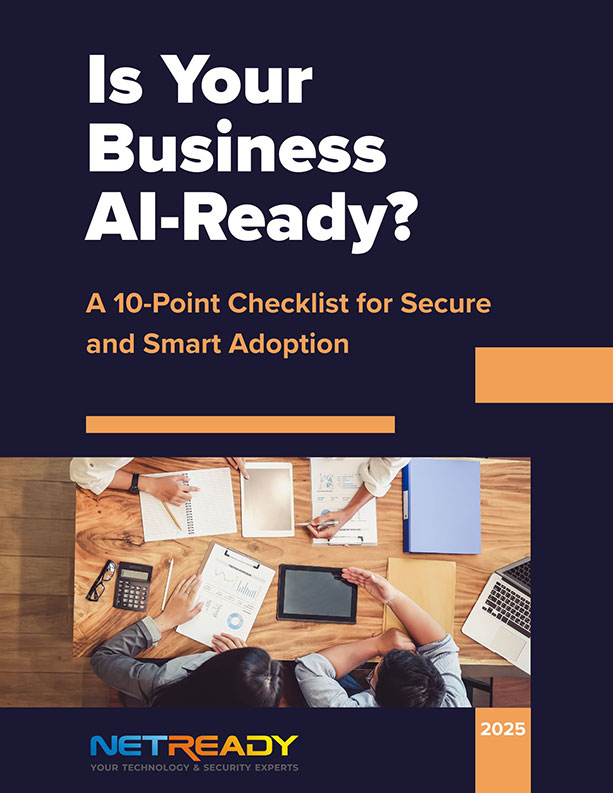
Three weeks ago, a Fortune 500 client called our cybersecurity team at Netready in a panic. Their legal department had discovered that employees were feeding confidential merger documents into ChatGPT for contract analysis assistance. The AI prompts contained detailed financial projections, competitor strategies, and material non-public information that could trigger SEC violations.
This wasn't a sophisticated cyberattack, malware infection, or zero-day exploit. It was poor artificial intelligence prompting practices—and it represents the fastest-growing cybersecurity blind spot I've encountered in my 20+ years of information security leadership.
The AI Prompting Security Problem Organizations Are Missing
While boardrooms debate artificial intelligence governance policies and IT departments wrestle with AI tool approvals, employees are already using AI systems daily. They're crafting prompts, sharing business context, and extracting insights—often without understanding the cybersecurity implications of their AI interactions.
From my perspective as both a CEO and someone holding CISSP, CISM, CISA, and CRISC certifications, I see AI prompting as the new frontier of information security risk management. Yet most organizations treat it as a user experience issue rather than a critical security control.
Here's what keeps cybersecurity professionals awake at night:
Every AI prompt is essentially a data transmission to a third-party system. When your marketing manager asks ChatGPT to "review this customer acquisition strategy and suggest improvements," they're potentially exposing proprietary business methodologies, customer insights, and competitive intelligence to an external platform with its own data retention and usage policies.
The Business Impact of Insecure AI Prompting
The cybersecurity risks aren't theoretical—they're happening now across multiple vectors:
Regulatory Compliance Violations: Healthcare organizations inadvertently including PHI (Protected Health Information) in AI prompts, violating HIPAA requirements. Financial services firms exposing customer data through AI interactions, triggering GDPR and SOX compliance issues.
Intellectual Property Leakage: Engineering teams using artificial intelligence to debug code containing proprietary algorithms. Sales teams sharing detailed customer profiles and pricing strategies for AI-assisted proposal development.
Operational Security Gaps: IT administrators asking AI tools to help troubleshoot network configurations, inadvertently revealing infrastructure details and security implementations.
The traditional perimeter-based security model assumes we control where sensitive data flows. AI prompting shatters that assumption, creating thousands of micro-decisions about data sharing that happen outside our governance frameworks.
Cybersecurity Risk Management for AI Prompting
As cybersecurity leaders, we need to apply the same information security risk management principles to AI prompting that we use for any other technology deployment. This means treating AI interactions as a critical business process requiring proper security controls, not a convenience feature requiring minimal oversight.
Risk Assessment: Conduct AI prompt risk assessments the same way you'd evaluate any new technology integration. Map data flows, identify sensitive information categories, and assess potential cybersecurity impact scenarios.
Data Classification: Develop clear data classification guidelines for AI interactions. Establish what types of business information can never be shared externally, what requires sanitization, and what poses acceptable risk levels.
Information Security Governance: Create AI prompting policies that go beyond "don't share confidential information." Provide specific guidance on context sharing, data sanitization techniques, and approved AI tools for different business functions.
Security Awareness Training: Traditional cybersecurity awareness training doesn't cover AI prompting risks. Develop targeted education that helps employees understand the difference between helpful context and dangerous data exposure.
The Competitive Advantage of Secure AI Implementation
Organizations that master secure AI prompting don't just mitigate cybersecurity risk—they create competitive advantages. When employees can confidently leverage artificial intelligence tools within established security boundaries, they become more productive without compromising compliance or security posture.
I've seen companies implement AI prompting security guidelines that actually accelerate AI adoption by giving employees clear frameworks for safe usage. Legal departments stop blocking AI initiatives when they see proper security controls in place. Board members support AI investments when they understand the risk mitigation strategies.
Implementing AI Security Controls: Your Action Plan
From an operational cybersecurity perspective, start treating AI prompting as you would any other critical business process:
- Conduct AI Usage Inventory: Perform an artificial intelligence tool audit across your organization. Most companies are shocked by the variety and volume of AI interactions already happening.
- Develop AI Prompting Security Standards: Create specific guidelines for different types of AI interactions, similar to how you might develop email security or social media policies.
- Implement Technical Security Controls: Consider AI gateway solutions that can monitor, filter, and audit AI interactions while maintaining user productivity.
- Establish Security Metrics: Create metrics for AI prompting compliance, just as you would for any other security control effectiveness measurement.
Conclusion: The Future of AI Security Risk Management
Artificial intelligence adoption is inevitable, but AI-related security incidents are not. The organizations that recognize AI prompting as a critical cybersecurity control today will be the ones that safely harness AI's full potential tomorrow.
As we help our clients navigate this new cybersecurity landscape at Netready, I'm convinced that mastering AI prompting security is becoming as fundamental as email security was two decades ago. The question isn't whether your organization will face AI-related risks—it's whether you'll be prepared when they emerge.
The companies that get ahead of this trend will find themselves with a significant competitive advantage: the ability to use artificial intelligence tools safely, confidently, and at scale.
What AI security challenges are you seeing in your organization? Contact our cybersecurity team to discuss your AI risk management strategy.
About the Author
Zac Abdulkadir is CEO of Netready, an IT Managed Service Provider specializing in cybersecurity and risk management. He holds CISSP, CISM, CISA, and CRISC certifications and has over 20 years of experience helping organizations navigate complex technology and security challenges.

 310-553-3055
310-553-3055 213-463-2100
213-463-2100
